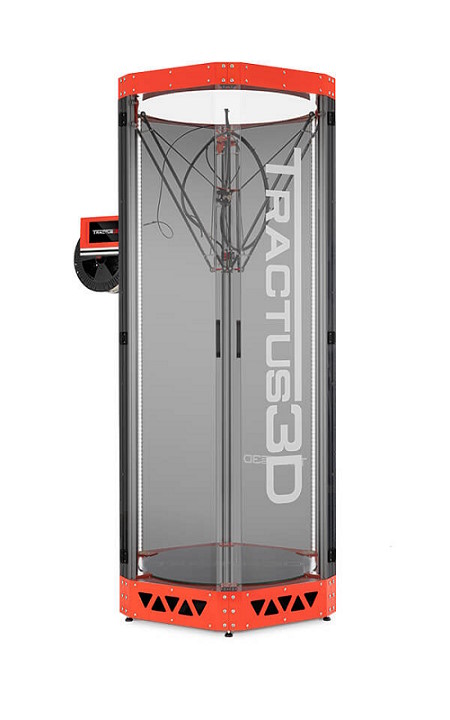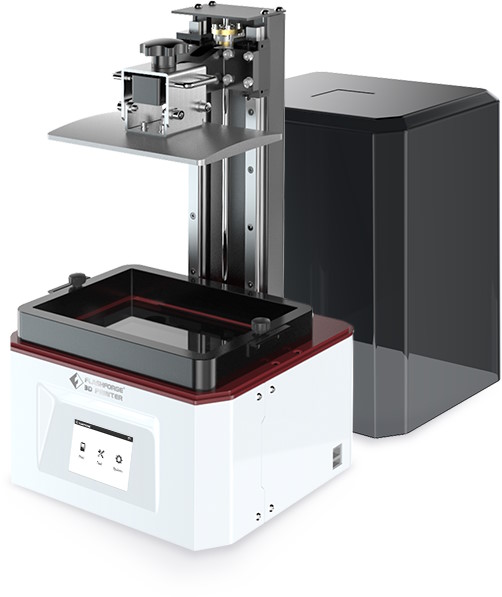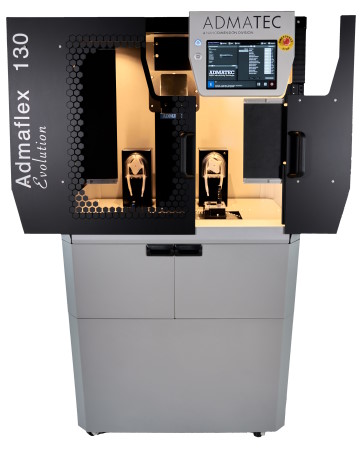3D Printers for Mechanical, Civil & Architecture
Engineering & Vocational Training students
Innovation In Your Hands
At EdNex we help you integrate 3D printer use into your engineering and vocational training curriculum, with a focus on its use in potential future applications. We provide top-notch 3D printers to match the requirements of Mechanical, Civil and Architecture courses with an aim is to provide students with hands-on experience in this cutting-edge technology and prepare them for careers in the rapidly growing field of additive manufacturing.
At EdNex, we use innovation to better prepare students for the fourth industrial revolution. We are dedicated to incorporating cutting-edge technologies and applications in our efforts to establish advanced manufacturing technology labs for educational institutions. Our solutions stay ahead of the curve, keeping pace with the latest Industry 4.0 advancements in additive manufacturing technology.
Gone are the days of simple FFF 3D printers. They have been replaced by more advanced FDM, SLA and DLP technologies, offering greater precision and versatility. EdNex is committed to equipping students with the skills they need to succeed in this rapidly evolving field.
3D Printing Technologies
The ISO/ASTM 52900 standardises 3D printing technology into seven process categories. However, material extrusion and vat polymerization are two processes that are most relevant for instruction in Mechanical, Civil and Architecture Engineering & Vocational Training. While material extrusion produces parts by printing layers of molten thermoplastic filament one on top of the other, vat photopolymerization produces parts by selectively curing liquid photopolymer resins with a UV light source.
Material Extrusion
Fused deposition modeling (FDM) is the most widely used material extrusion printing technology.
Vat Polymerization
The two most common printing technologies in the vat photopolymerization category are Stereolithography (SLA) 3D printing and direct light processing (DLP) 3D printing.
FUSED DEPOSITION MODELING (FDM) 3D PRINTERS
Fused Deposition Modeling (FDM) is a type of 3D printing that involves constructing objects by layering and bonding melted material extruded from a nozzle. It is considered one of the most straightforward methods of additive manufacturing and is favoured for its affordability, efficiency and widespread use.
Why FDM 3D Printers
- Scalable and customisable
- Cost-effective – Cheapest 3D printing material compared to other methods such as SLS and resin-based printing
- Wide range of thermoplastic materials and exotic filaments can be used
Materials Used:
- Standard thermoplastics: ABS, PLA, blends
- Experimental filaments for wood/metal-like surfaces
- Engineering materials: Nylon, PETG, PA, TPU, PEEK, PEI (limited to select professional FDM printers)
FDM Adventurer 4 Desktop 3D Printer
The Adventurer 4 has the ability to print on a large scale, features auto bed levelling, and enables control of multiple machines from a single computer.
Features:
- Removable nozzle
- Multiple nozzle options
- Build platform can heat up to 110℃ in Max
- Nine-point auto-calibration
- Multi-function escort
- Safe and easy to use
Applications: Ideal for prototyping for engineers and producing samples for small scale businesses
Materials supported: PLA, ABS, PC, PETG, PLA-CF, PTEG-CF


Flashforge FDM Creator 3 Pro 3D Printer
Creator 3 Pro improves the success rate of levelling and makes the printing positioning more accurate and comes with independent dual extruders
Features:
- Independent dual extruders support water-soluble materials printing
- Industrial-grade precision ±0.2mm
- Build Plate: 120℃
- The extruder supports up to 320℃
- New FlashPrint slicing software
- Cloud platform printing
Applications: For prototyping and use in small design studios
Materials supported: PLA, ABS, PA, PC, PVA, HIPS, PETG, Wood, ASA, PACF
Cubicon FDM Dual Plus Industrial Grade 3D Printer
The Dual Plus system is designed to meet the need for innovative and varied materials, including soluble filaments. These filaments allow for the creation of intricate details that are challenging to produce with traditional molding techniques.
Features:
- Nozzle temp upto 500℃
- Soluble support available
- Full-auto XY calibration
- Heat keeping chamber
- Air optimiser; Water cooling system
- Filament conditioner
- Glu-free metal bed
- Remote control app ‘CubiControl’
Applications: Manufacturing components in diverse industries
Materials supported: PLA, ABS, ABS-100, PTEG, TPU, PC, ASA, PP, PA, Nylon, PEEK, CF-PEEK (Carbon Fiber), PEKK

Omni500 LITE FDM 3D Printer
The Omni500 LITE is a cost-effective, extra-large format Fused Filament Fabrication 3D printer. It utilises production-quality, open-source filament and boasts a remarkable build space of 460mm x 460mm x 600mm.
Features:
- Print large objects or multiple smaller models at once
- 2 extruders with filament presence sensor
- Printer management by dedicated website
- Printer farm management
Applications: Manufacturing of large parts
Materials supported: ABS-42, ABS V0, ABS FC, ASA-39, PET-G-32, PETG CARBON, CF PA-12, PLA-36, PLA-BAMBOO, PLA-CORK, PLA-PAPER, TPU-93A, PVA-20, ODS-20, ABS FUSION+
Tractus3D T2000 FDM Ultra Large Volume 3D Printer
The Tractus3D T2000 is a top-performing and affordable 3D printer, designed with a passion for excellence. With a massive print volume of up to 1 meter, fast printing speeds and high accuracy, the T2000 can fit into any office or workspace. Despite its size, it has a compact design with a height of 204 cm and width of 82 cm, allowing it to easily fit through standard doors. The closed chamber design provides excellent temperature stability, reducing the risk of warping for large, accurate 3D prints.
Features:
- F033L printhead
- Fast extrusion
- 7-inch touchscreen
- Print volume upto 1 metre
Applications: Large volume printing in small spaces
Materials supported: PLA, PRO-1, PTEG, ABS, ASA, Facilan C8, TPU/TPE, Nylon, PC, Fillers like Wood Fill

STEREOLITHOGRAPHY (SLA) 3D PRINTERS
Stereolithography (SLA) is a widely used resin 3D printing process that produces high-precision, watertight parts and prototypes with fine details and a smooth finish. SLA is part of the vat photopolymerization family of additive manufacturing technologies and operates by curing liquid resin into solid plastic using a laser or projector light source. The design of SLA machines varies but they all use the same basic curing principle.
Why SLA 3D Printers
- SLA 3D printing uses a highly-precise laser to cure liquid resin into solid plastic
- Known for ultimate part precision and accuracy
- Uses light instead of heat for printing, avoiding thermal expansion and contraction artifacts
- Creates chemical bonds across layers for fully dense, watertight and airtight parts
Material used:
- SLA resin materials offer a variety of formulation options:
- Can be soft or hard
- Can be filled with additives such as glass or ceramic
- Can have mechanical properties like high heat deflection temperature or impact resistance
- Wide range of optical, mechanical and thermal properties to match standard, engineering and industrial thermoplastics
Flashforge Foto 9.25 6K Resin SLA 3D Printer
Foto 9.25 6K is equipped with a professional self-developed slicing software, of which the interface is simple and easy to operate, the slicing operation is sensitive and is easy for modeling.
Features:
- 9.25-inch monochrome screen
- 6K HD resolution
- Enlarged space
- High-performance Z-axis
- Professional slicer
Applications: Manufacturing of decorative parts or finished end-use products

Cubicon Max 600 Large SLA 3D Printer
The MAX600 has been equipped with a cutting-edge optical system developed by the High Vision System. This system features a laser spot size that can be adjusted for precision, with variations ranging from 80 to 700um. As a result, the MAX600 is capable of producing high-quality prints with exceptional accuracy, both on the exterior and at high speeds on the interior of the output.
Features:
- Core Spot Size Variable System for precise and fast printing
- Ability to print with a variety of output materials
- Auto-Collimator for precise tilting calibration
- Recoater Auto-Levelling for optimal output quality
- Anti-vibration design for improved output quality
- Compatible with Magics software for easy 3D data editing
Applications: High-accuracy, isotropic, and watertight prototypes
Materials supported: Various materials, including ABS-Like, heat-resistant, transparent, and soft materials
DIGITAL LIGHT PROCESSING (DLP) METAL AND CERAMIC 3D PRINTERS
Digital Light Processing (DLP) 3D printing is a type of vat polymerization method that uses liquid resins instead of thermoplastics. It uses a projector to selectively cure the resin onto a build platform in layers, curing each point simultaneously. The process cures an entire layer of the 3D model all at once.
Why DLP 3D Printers
- Highly accurate
- Intricate designs
- Fast turnaround
- Bottom-up printing
- Less running costs
Materials used:
- Aluminum oxide
- Zirconium oxide
- Silicon oxide
- A combination of aluminum and zirconium
- Hydroxyapatite
- Silica-based materials
Admatec Admaflex 130 Evolution Ceramic and Metal DLP 3D Printer
The machine features the unique capability to 3D print both advanced ceramics and metals on one system and comes with open software for customisable printing parameters, real-time process optimisation and material development. With up to 300 printed layers per hour, the Admaflex 130 Evolution is one of the fastest and most efficient ceramic 3D printers available on the market today. It also features vision-based process monitoring for traceable printing and automatic support generation software for non-flat starting geometries.
Features:
- High productivity
- Free adjustable printing parameters
- Multi-part printing
- In-process monitoring system
Applications: Ideal for digital serial production of functional and aesthetical parts requiring complex geometries and high resolution
Materials supported: Al2O3 Alumina, ZrO2 Zirconia, Fused Silica, Hydroxyapatite, Stainless Steel 316L, Stainless Steel 17-4 PH, Inconel 625, Copper

Have a Question?
Are you a school or a university aspiring to revolutionize learning for your students? Or an enterprise seeking to alter the paradigms of how you work? EdNex crafts and implements solutions that are a perfect fit for your institution.
